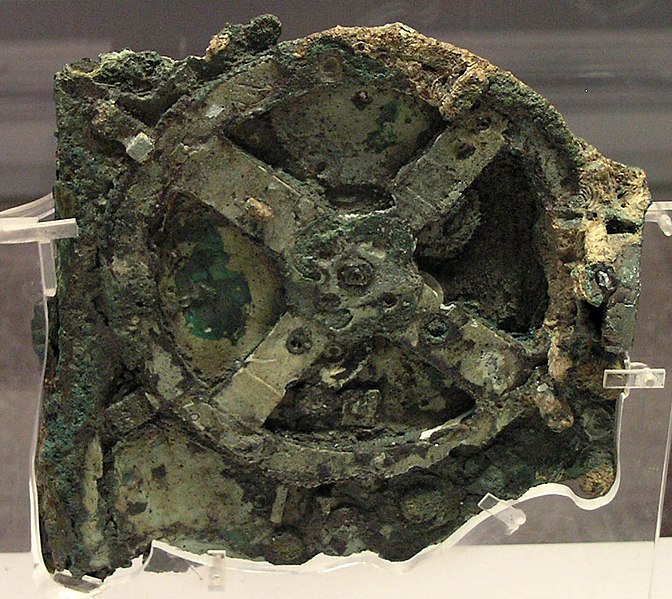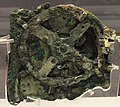Fil:NAMA Machine d'Anticythère 1.jpg

Storlek på förhandsvisningen: 672 × 599 pixlar. Andra upplösningar: 269 × 240 pixlar | 538 × 480 pixlar | 861 × 768 pixlar | 1 036 × 924 pixlar.
Originalfil (1 036 × 924 pixlar, filstorlek: 207 kbyte, MIME-typ: image/jpeg)
Filhistorik
Klicka på ett datum/klockslag för att se filen som den såg ut då.
| Datum/Tid | Miniatyrbild | Dimensioner | Användare | Kommentar | |
|---|---|---|---|---|---|
| nuvarande | 20 december 2005 kl. 12.48 |  | 1 036 × 924 (207 kbyte) | Marsyas | Fragment principal de la machine d'Anticythère. Le mécanisme consiste en un système complexe de 32 roues et plaques portant des inscriptions relatives aux signes du zodiac et aux mois. L'étude des fragments suggère qu'il s'agissait d'une sorte d'astr |
Filanvändning
Följande sida använder den här filen:
Global filanvändning
Följande andra wikier använder denna fil:
- Användande på ab.wikipedia.org
- Användande på af.wikipedia.org
- Användande på als.wikipedia.org
- Användande på ang.wikipedia.org
- Användande på anp.wikipedia.org
- Användande på an.wikipedia.org
- Användande på ar.wikipedia.org
- Användande på ast.wikipedia.org
- Användande på azb.wikipedia.org
- Användande på az.wikipedia.org
- Användande på bcl.wikipedia.org
- Användande på be-tarask.wikipedia.org
- Användande på be.wikipedia.org
- Användande på bg.wikipedia.org
- Användande på bn.wikipedia.org
- Användande på bs.wikipedia.org
- Användande på ca.wikipedia.org
- Användande på ce.wikipedia.org
- Användande på cs.wikipedia.org
- Användande på cv.wikipedia.org
Visa mer globalt användande av denna fil.
